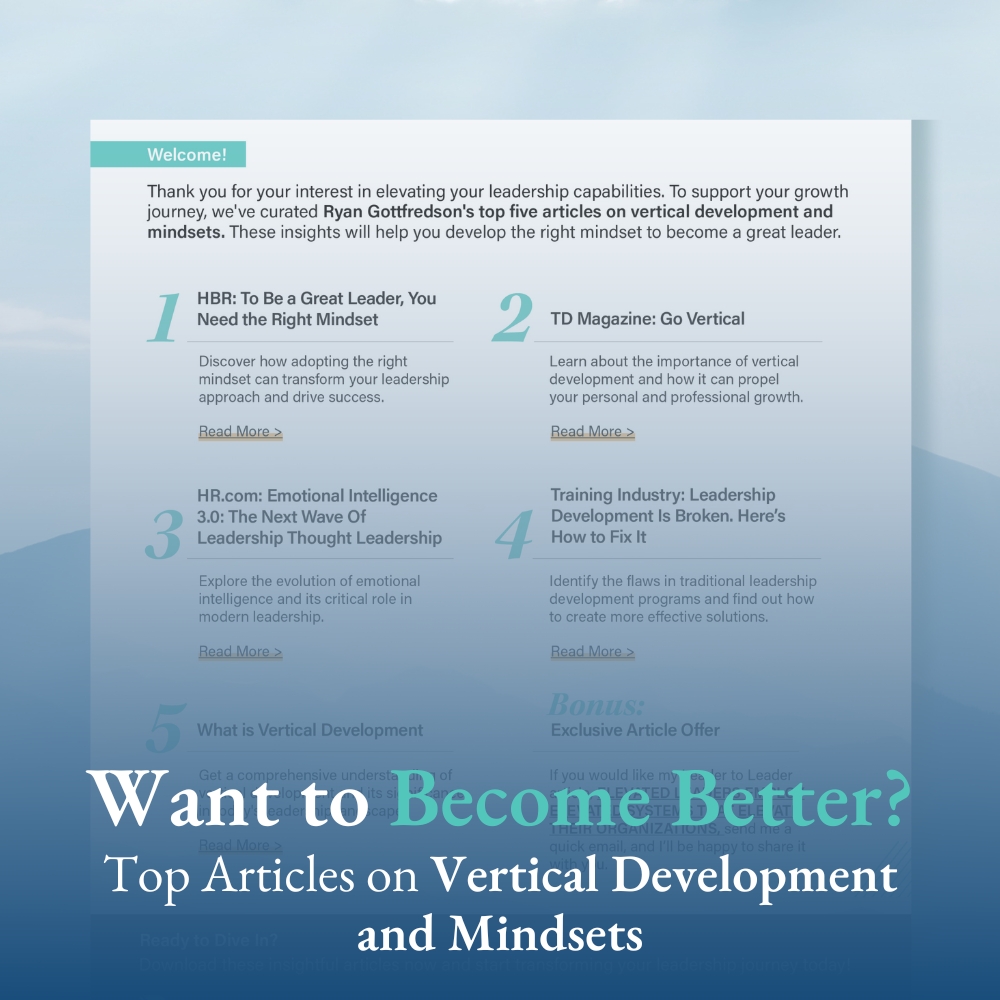Unless you have been living under a rock, you know that during the past several years there has been multiple strong social movements based upon the idea that everyone has value and that value needs to be respected (e.g., #metoo movement).
In fact, Gillette recently came out with what is proving to be a controversial commercial that deals with the topic.
This basic idea—that it is important to see everyone has having value—has slipped into leadership thought, increasing the need, interest, and promotion of what has been termed “inclusive leadership.”
I want to explain what inclusive leadership is and why it is important. But, before I do, it is important to put the idea into proper context.
Understanding Different Leadership Types or Styles
There are many different ways to categorize effective leadership. For example, transformational, servant, and authentic leadership are a variety of different leadership types or styles that have been proclaimed as being essential for effective leadership.
In reality, these different leadership styles are not entirely different from each other, they are overlapping.
One of the cons associated with distinguishing between overlapping leadership types and styles is that it often leads people to think that they are different, and that one is better or more important than others. The reality is that it is very difficult to find a truly transformational leaders that is not also a servant leader.
But, one of the pros associated with distinguishing between overlapping leadership types and styles is that they provide leaders with the opportunity to focus on developing very specific aspects of their leadership.
This is the case with inclusive leadership. It is similar to and overlapping with other leadership types and styles, but focusing on it allows leaders to isolate, evaluate, and improve their leadership in a very specific way.
Before we jump into what inclusive leadership is, we must first understand what inclusiveness is within a workplace setting and why it is so important.
Inclusiveness

In order for employees to say that they work in an inclusive work environment, they must believe that they are treated fairly, valued for who they are, and included in core decision making.
It is critical that employees feel that they work in an inclusive environment. If employees feel they are treated fairly, valued, and included, then they are going to be deeply engaged, committed, and motivated. When employees have a voice, and they feel their voice is valued, they will believe that they are an important contributor in the organization. When they believe this, they will be excited about going to work, be more creative, and be more dedicated to fulfilling the mission of the organization, largely because they helped create the mission of the organization. The opposite is the case when employees feel like they do not work in an inclusive environment.
In fact, when I was with Gallup, I did an analysis to identify which of their Q12 questions (their name for their engagement measure comprised of 12 questions) was most important for driving engagement. I found that there were two of the 12 that were the strongest drivers of engagement and they relate directly to inclusiveness.
First, I found that if an employee can ‘strongly agree’ to the item, “My opinions count at work,” 92% of those employees can be categorized as ‘engaged.’ In other words, if employees feel they have a voice, it is essentially a ‘slam dunk’ for them being engaged.
Second, I found that if an employee cannot ‘strongly agree’ (meaning respond with a 1-4 on a 5-point scale) to the item, “Someone at work cares about me as a person,” only 12% of those employees can be categorized as ‘engaged.’ In other words, if employees do not strongly feel cared about or of value, they are not going to be engaged.
These two things seem simple, yet Gallup has found that only 30% of employees are engaged.
This is where inclusive leadership comes in. If we want our employees to be engaged, their leaders need to behave inclusively, meaning giving them a voice and valuing them.
Inclusive Leadership

Inclusive leaders are those who:
1. Treat those the lead fairly
2. Value those they lead for who they are
3. Include those they lead in core decision making
They do not play favorites and they do not dictate from the top. Instead, they involve everyone and facilitate great ideas from the bottom up.
How do you become an inclusive leader?
If you want to be an inclusive leader, or be more of an inclusive leader, you must operate with specific mental paradigms or mindsets. In other words, you must see those you lead in the most effective way, which implies that some people see others in more effective ways while others see them in ineffective ways.
First, you need to develop a growth mindset. This means that you value growth and development over looking good (which is the result of a fixed mindset). When a leader has a growth mindset, they are able to see challenges and failure as opportunities to improve, grow, and make progress. As such, they are willing to let those they lead have responsibility and make decisions, even if it means that they will mess up every once in a while. Leaders with a fixed mindset are not able to be inclusive because they have a fear of failur and not looking good, which causes them to want to protect themselves by limiting those they lead from having responsibility and being involved in core decision making. They seek to control their employees.
Second, you need to have an open mindset. This means that you value seeking truth over being seen as being right (the result of a closed mindset). When you have an open mindset, you recognize that you can be wrong, and to arrive at truth, you seek out the ideas and perspectives of others. You value their voice. Leaders with a closed mindset value being seen as being right. As such, they are not able to be inclusive because they limit the voice of others so that they can be seen as being “in charge.”

Third, you need to have an outward mindset. This means that you see and value others as who they truly are, people of value with unique and important needs, interests, and feelings. Leaders with an inward mindset see themselves as being more important than others, and as such, they see others as objects, losing sensitivity to their needs, interests, and feelings. To quote The Arbinger Institute, such leaders are not able to be inclusive because “they don’t know how much smarter smart people are, how much more skilled skilled people get, and how much harder hardworking people work when they see, and are seen, straightforwardly—as people.”
Conclusion
Not surprisingly, effective leadership is rooted in having the right mindsets. This is surely the case with inclusive leadership. The reality is that leaders do not go from being non-inclusive to being inclusive through a focus of changing their behaviors. To be inclusive, one has to have the right heart. The transition from less-inclusive to more-inclusive will only come through a change of heart, a change of mindsets.
Thus, if you want to be a more inclusive leader or if you want your leaders to be more inclusive so that you and your organization can enjoy the benefits of enhanced engagement, commitment, and motivation, you have got to focus on developing your mindsets. As you do, naturally, inclusive leadership with arise.
If you would like to see if you have the mindsets necessary for effective inclusive leadership, take my free personal mindset assessment:
Also, if you would like to have a training or webinar within your organization about inclusive leadership and developing such leadership through a focus on mindsets, contact me directly.










